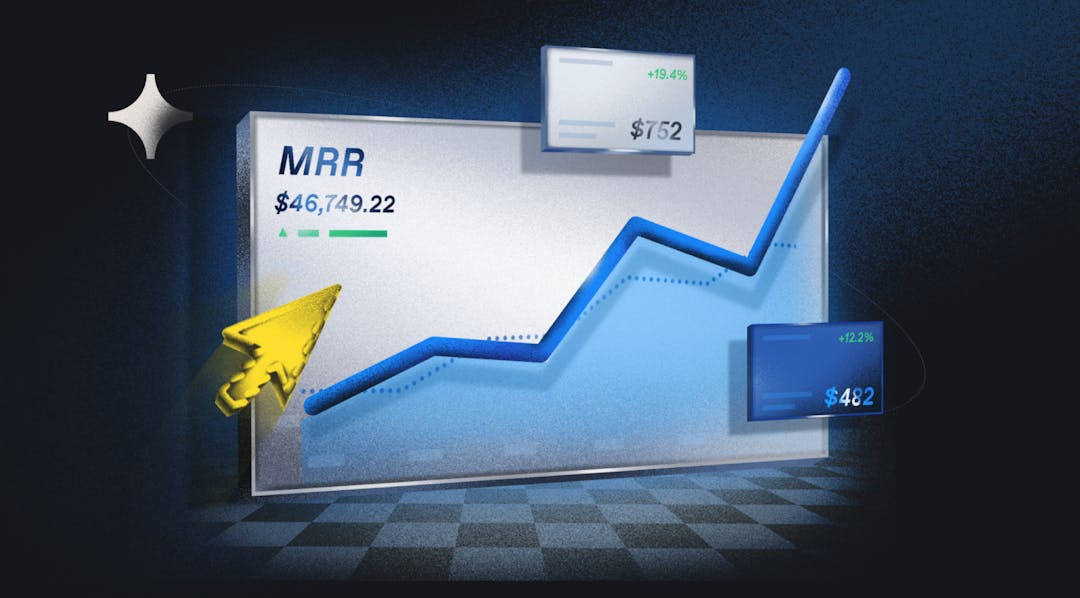The direct-to-consumer business model is exploding. Many brands are finding success in offering products directly to the public that are more affordable, better quality, or both. In this post, we'll take a look at some of the most interesting direct-to-consumer statistics to see what trendsetting DTC brands are doing right.

What are direct-to-consumer brands?
Direct-to-consumer brands (DTC or D2C brands) are companies that have chosen to skip the traditional wholesale-retail relationship and sell their products directly to buyers. This is usually done in an eCommerce platform, though some large DTC brands, such as Apple Computer, have launched their own physical stores from which to sell directly.
3 DTC brands crushing it
According to the latest direct-to-consumer statistics, the following 3 brands are crushing it in the DTC space:
1. The Honest Company
Products from Jessica Alba's The Honest Company are becoming higher quality and more affordable than regular name brand products. As such, it is one of the companies helping to drive consumers to make the switch from traditional retail to DTC.
3. LOLA
We mentioned LOLA earlier. The feminine hygiene company recently signed with Walmart to bring their products into the brick-and-mortar world. This should expand their brand awareness and provide a boost to their DTC sales as a result.
3. Tesla
The electric automaker makes it on the list because their DTC model allowed them to take a smaller hit than other auto manufacturers did during the lockdowns caused by the Covid-19 pandemic. Tesla is demonstrating that the DTC model can work for the auto industry. Something the auto industry has been hesitant to transition to.
Direct-to-consumer eCommerce vs traditional retail stores
Part of the reason we are seeing an explosion of DTC brands is that technology now makes it possible for companies to easily reach out to their customer base directly. Being easy alone, however, is not enough to draw investors. The real attraction to DTC vs traditional retail comes from the many benefits that the DTC model brings with it.
DTC prioritizes long-term customer relationships with
Selling directly to consumers allows a company to form a closer relationship with new customers than they would be able to through the proxy of a middleman. Often in DTC sales, a subscription model and a stellar customer experience will be employed to further nurture and benefit from these closer, more loyal, relationships. This direct relationship with customers also means that brands own their customer data and can build a customer journey that prioritizes retention by adapting to current market demand.
DTC lowers customer acquisition costs
By eliminating the middleman, DTC companies are able to increase the appeal of their products by offering lower retail prices than they would otherwise be able to as they have more ownership over the supply chain. This effectively lowers customer acquisition costs, creating a win-win for both business and consumer.
DTC brands have more control over product and marketing efforts
In traditional retail, retailers and distributors have some control over how new products are distributed and marketed. With eCommerce sales, DTC brands take all of their marketing and analytics data fully in-house and can gain more insights into their customer demographic. This means that D2C companies are in a better position to leverage new sales channels and tactics like social media and influencer marketing to grow their customer base beyond traditional brick-and-mortar stores. With more control over their product and marketing strategy, DTC brands can scale to capture more market share and increase profitability.
4 direct-to-consumer statistics that show the promise of DTC
You've heard us say many times how well DTC brands are doing. Now is a good time to look at some of the direct-to-consumer statistics that lead us to that conclusion. Hopefully these will give you a good idea of just how powerful the DTC business model is.
1. 25% of US consumers are making nearly ⅕ of their purchases from DTC brands
According to Diffusion's 2020 Direct-to-Consumer Purchase Intent index, a quarter of all Americans make DTC purchases a regular part of their shopping. On the more extreme end of the scale, 3% of respondents said they expect to be making nearly all of their purchases through DTC brands in the coming years.
2. 81% of consumers will make at least one DTC purchase over the next 5 years
Though traditional retailers still account for the majority of sales, DTC brands are quickly conquering a big part of that market through convenience, product quality, and low or free shipping that they’re able to offer. A clear majority of customers say that they'll be making at least one purchase through a DTC company in the next five years.
3. 77% of apparel and accessory companies are now DTC
Nike may be one of the largest apparel companies to make the move to DTC, but they are far from alone. Apparel and accessories are a huge segment of the DTC market.
4. 11% of DTC companies are doing over $100M in sales
The same survey from above gives us an even bigger picture of how well DTC companies are doing, with nearly four times as many making over $100M in sales than those making under $1 million.
4 characteristics of successful DTC brands
We've discussed what makes the DTC model so attractive to businesses, but what is it about them that draws in the customer and drives their growth? Part of the success of DTC is how mutually beneficial the model is for both, the customer and the company.
1. Value-driven
DTC brands tend to be formed as a result of something the founders feel is lacking in the market. This often translates into a set of values that customers can relate to. For example, LOLA, a feminine hygiene company, saw a lack of transparency in traditional retail hygiene products and turned that into advocacy for better access to quality hygienic products for women.
2. Highly personalized user experience
With a closer relationship to the customer, DTC brands can communicate with their customers in a more personalized way through digital channels. With no concerns over shelf space, they can also offer highly-personalized options to consumers to more precisely fit each person's unique needs.
3. Convenience
Many DTC brands are selling consumables that customers will need over and over again. By offering subscription plans that deliver on a weekly or monthly basis, these brands give consumers one less thing to worry about running out of before their next trip to the store.
4. More affordable
Although they aren't always cheaper than store-bought alternatives, DTC brands tend to be more affordable for the quality level they offer than in-store brands do. As mentioned earlier, this is due to their ability to cut out the middleman and pass some of those savings on.
5 DTC trends that drive growth
Although still a relatively young business model, DTC has changed since the first successful wave of companies using the model came onto the scene. There are three big direct-to-consumer trends driving DTC sales.
1. Subscription services
This one isn't new, but remains a dominant feature of DTC sales. As we mentioned earlier, the convenience of subscriptions is something that customers respond well to, so it's something that DTC businesses continue to incorporate into their strategy.
2. Big brand retailers test-driving DTC
Apple has long been a company that gets its sales primarily in a direct-to-consumer fashion, but other large brands are beginning to test their own DTC waters. Nike has opened their own brick-and-mortar DTC stores, as well as selling to consumers through their website. After Unilever purchased the early DTC adopter Dollar Shave Club in 2016, other big brands have been acquiring their own direct-to-consumer companies as well.
3. Discounted signups and free trials
Getting customers to take the first step is often the hardest part of marketing for a DTC company. To entice more first-time consumers into taking that step, DTC brands are offering discounted signups, free trials, or other freebies to new members. As long as these freebies are well below the customer lifetime value, the strategy pays off.
4. Consumers don't necessarily want corporate infrastructure
For a while, the trend was for big box stores to come in and put the little guy out of business. As commerce moves away from a brick-and-mortar model and closer to the eCommerce market, the odds have evened up a little. Consumers generally do not care if there is a large corporation with massive R&D budgets, so long as the product is high-quality and affordable.
5. DTC alternatives are growing in popularity
The same quality and affordability DTC products offer that allows them to compete directly with much larger competitors, also makes consumers more willing to give products sold under the model a try. Growth in the sector should continue to climb as consumers become less apprehensive about purchasing directly from the brands they follow.
Direct-to-consumer beyond COVID-19
Direct-to-consumer statistics indicate that the COVID-19 pandemic certainly accelerated the adoption of the DTC model. It’s no surprise that brands that were less reliant on physical showrooms were well-positioned to ride out the pandemic with fewer losses than their competitors. This has been the case for many DTC companies during the pandemic.
As the world continues to reel from the effects of coronavirus, it's likely that we'll see an even bigger embrace of DTC as a business model, as customers that weren’t typically inclined to shop DTC brands are now very likely to do so. When customers forced into the model realize the same benefits that pre-lockdown DTC customers did, there's a good chance they'll stick around even after their lives begin to get back to normal.
Turbocharge your DTC subscription growth
Theory and execution are two different things and to succeed, you’ll need the right tools. We have a few that might just be what your business needs to level up your DTC game.
Leverage your DTC metrics for growth
Paddle offers a number of products that can help your business become one of DTC's rising stars. You can get started for free with ProfitWell Metrics. These powerful analytics give you access to all the data you need to track in order to kick your company's growth into overdrive.
Automate your churn recovery
You'll no doubt want to keep churn rates as low as possible. Did you know that involuntary churn caused by payment failures causes businesses to lose 30% of sales? Make sure that your business is covered with Retain.
Make smart pricing decisions
Sustainable DTC growth hinges on having a good subscription program that delivers ongoing value to customers. Value is fluid over time and should be reflected in your pricing. Level up your subscription pricing strategy with Price Intelligently. With it, you can optimize your pricing to maximize conversion rates, avoid leaving money on the table, and continue growing.
Direct-to-consumer statistics & trends FAQs
Is DTC a sustainable business model?
With the rise of eCommerce and consumers getting more educated about brands, it’s fair to say that DTC businesses are here to stay. Whether or not it is a sustainable business model depends on how a brand adapts its growth strategy to the needs of its customers in order to provide ongoing value. The best way to do this is by offering a subscription.
What are the top DTC trends of 2021?
As the world progresses back to normalcy, 2021 will likely see a hybrid combination of DTC brands with brick-and-mortar storefronts or partnerships with existing big box retail. As more and more companies see the benefits of DTC, there will also be an increase in competition as more new brands come online and established brands move into the DTC space.
What is influencer marketing in DTC?
As DTC companies target millennial and Gen Z customer bases, it’s no surprise that many brands do not shy away from leveraging influencers to expand the reach of their products. This can be done via sponsorship, collaborations, or even partnerships with prominent influencers in their niche. Brands like Warby Parker and Casper have used influencer marketing to drive awareness about their products.
Can established brands pivot to a DTC model?
Yes, this has been shown by Apple and Nike through launching their own flagship outlets. Brands like Unilever are entering the DTC market by purchasing successful DTC businesses such as Dollar Shave Club.




